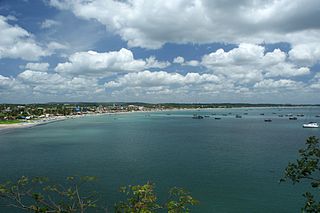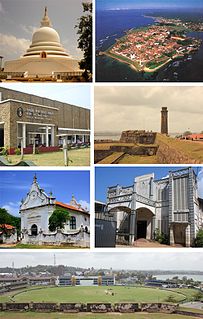
Galle is a major city in Sri Lanka, situated on the southwestern tip, 119 km from Colombo. Galle is the administrative capital of Southern Province, Sri Lanka and is the district capital of Galle District.
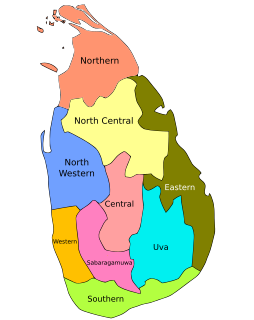
In Sri Lanka, provinces are the first level administrative division. They were first established by the British rulers of Ceylon in 1833. Over the next century most of the administrative functions were transferred to the districts, the second level administrative division. By the middle of the 20th century the provinces had become merely ceremonial. This changed in 1987 when, following several decades of increasing demand for a decentralization, the 13th Amendment to the 1978 Constitution of Sri Lanka established provincial councils. Currently there are nine provinces.

The Colombo Dutch Museum is a museum that covers the history of the Dutch colonial rule in Sri Lanka.
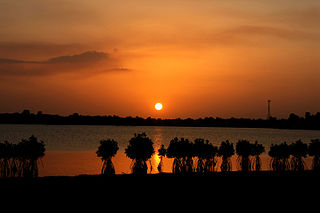
The Eastern Province is one of the nine provinces of Sri Lanka, the first level administrative division of the country. The provinces have existed since the 19th century but did not have any legal status until 1987 when the 13th Amendment to the Constitution of Sri Lanka established provincial councils. Between 1988 and 2006 the province was temporarily merged with the Northern Province to form the North Eastern Province. The capital of the province is Trincomalee.
The Portuguese Burghers are an ethnic group in Sri Lanka, of mixed Portuguese and Sri Lankan descent. They are Roman Catholic and spoke the Sri Lanka Indo-Portuguese language, a creole based on Portuguese. In modern times, English has become the common language while Sinhalese is taught in school as a second language. A large number of Portuguese Burghers living on the east coast of Sri Lanka are of Portuguese descent; this is evident in the Sri Lanka-Indo Portuguese language, which has many affiliations to Sinhalese and Portuguese. They are mixed with other Burgher people, including Dutch Burghers. However, Portuguese Burghers are not Dutch Burghers.

The Department of Posts, functioning under the brand name Sri Lanka Post(Sinhala: තැපැල් දෙපාර්තමේන්තුව, ශ්රී ලංකා Tæpæl Departhamenthuwa, Shri Lanka), is a government operated postal system in Sri Lanka. The postal headquarters is the General Post Office which is located in Colombo. The department itself comes under the purview of the Ministry of Telecommunications and Posts. It was formerly known as the Ceylon Post and Telecommunications Department and is one of the oldest Government departments in existence today.

SLNS Gajabahu was a River-class frigate of the Sri Lanka Navy. She has since been converted to a training ship for the Naval & Maritime Academy, Trincomalee. She was originally HMCS Hallowell of the Royal Canadian Navy, built during the Second World War and then saw service as INS Misnak of the Israeli Navy. The Royal Ceylon Navy purchased her in 1958 from Israel.

Naval and Maritime Academy (NMA), Trincomalee, is the location of initial officer training in the Sri Lanka Navy, and is located within SLN Dockyard, Trincomalee. It received university status in 2001 under the leadership of Commodore SR Samaratunga.
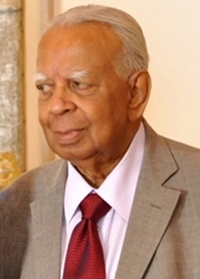
Rajavarothiam Sampanthan is a Sri Lankan Tamil politician and lawyer who has led the Tamil National Alliance since 2001. He has also been a Member of Parliament since 2001, and previously served as a Member of Parliament from 1977 to 1983 and from 1997 to 2000. He was the Leader of the Opposition from September 2015 to December 2018.

The Hoods Tower Museum is a naval museum of the Sri Lanka Navy in Trincomalee. It is located at Ostenburg, in the Trincomalee peninsula on a high ridge overlooking the entrance to the inner harbor of Trincomalee within the SLN Dockyard. The museum gains its name from the Hoods Tower, an observation tower named after Vice-Admiral Sir Samuel Hood, Commander of the East Indies Station.

The Sri Lanka Armed Forces is the overall unified military of the Democratic Socialist Republic of Sri Lanka encompassing the Sri Lanka Army, the Sri Lanka Navy, and the Sri Lanka Air Force; they are governed by the Ministry of Defence (MoD). The three services have around 346,700 active personnel; conscription has never been imposed in Sri Lanka. The Sri Lanka Coast Guard is also under the purview of the Ministry of Defence but is staffed by civilian personal.
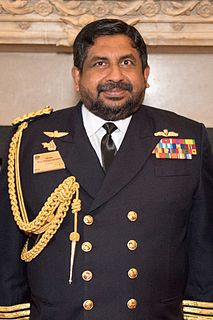
Admiral Ravindra Chandrasiri Wijegunaratne, WV, RWP, RSP, VSV, USP, ndu, psc, MNI is a Sri Lankan naval officer, and current Chief of Defence Staff of the Sri Lanka Armed Forces. He has also served as the Commander of the Sri Lankan Navy, Chief of Staff of the Sri Lanka Navy, the Director General of the Sri Lanka Coast Guard and held, at various times, four of the seven Naval Commands of the SLN. Wijegunaratne has also served as Director Naval Operations, and is a recipient of the Weerodara Vibhushanaya.

Navy House is an official residence of the Commander of the Sri Lanka Navy, located in SLN Dockyard, Trincomalee, Sri Lanka. It was formerly the official residence of the naval officer commanding, HM Dockyard, Trincomalee and later the Commander-in-Chief, East Indies Station of the Royal Navy until 1957 when British forces departed from Ceylon.
The Trincomalee Garrison is a common name used for collection of military bases of the Sri Lanka Army located in and around the Fort Fredrick and the town of Trincomalee in the Eastern Province. Due to the large natural harbor, it is one of the oldest military garrisons in Sri Lanka and has been occupied by the Portuguese, Dutch, French and the British. Known as Trincomalee Fortress during World War II.

Sri Lanka Navy (SLN) Dockyard is the largest naval base of the Sri Lanka Navy and a major shipyard located in Trincomalee, Sri Lanka. Established by the British as the Royal Naval Dockyard, Trincomalee it was home to the East Indies Station of the Royal Navy during World War II. Since the withdrawal of the Royal Navy, the Royal Ceylon Navy took over dockyard. It became the home base of the RCyN fleet and today it is home to the Eastern Naval Command and the Naval and Maritime Academy of the Sri Lanka Navy.

Admiral (retired) Jayantha Perera RWP, VSV, USP, ndu, psc was the 19th Commander of the Sri Lankan Navy.


